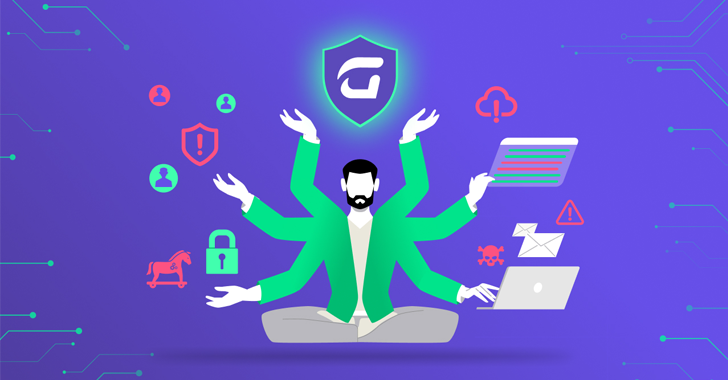Highlights
- Complex Tool Landscape: Explore the wide array of cybersecurity tools used by MSPs, highlighting the common challenge of managing multiple systems that may overlap in functionality but lack integration.
- Top Cybersecurity Challenges: Discuss the main challenges MSPs face, including integration issues, limited visibility across systems, and the high cost and complexity of maintaining diverse tools.
- Effective Solutions and Strategies: Introduce strategic approaches and solutions, such as consolidating tools into unified platforms to enhance efficiency, reduce costs, and improve overall cybersecurity management.
As MSPs continue to be the backbone of IT security for numerous businesses, the array of tools at their disposal has grown exponentially. However, this abundance of options isn’t without its drawbacks. The challenge isn’t just in choosing the right tools but in efficiently integrating and managing them to ensure seamless security coverage and operational efficiency. This article delves into the top tools and software MSPs use and the challenges associated with having too many tools.
Where Does an MSP Begin?
MSPs rely on a variety of tools to help secure their clients’ IT, automate daily workflows, manage access permissions, and streamline billing processes.
But is having too many tools a good thing?
In this blog, we’ll explore the top tools and software MSPs use and the challenges associated with having too many tools.
The Main Challenges of Having Too Many Tools
MSPs have a lot of tools in their arsenal.
There are several challenges an MSP faces with the use of multiple security tools.
A recent survey found that 36% of MSPs use more than 10 cybersecurity tools, and 30% use four to five vendors to deliver client services. This creates tool sprawl and increases the risk of gaps in security coverage, which can lead to a breach.
But that’s not all.
Here are a few other key challenges to take into consideration:
- Integration Issues: Integration between different tools can be complex, and certain tools might be inoperable with others. There might also be the issue of API limitations in terms of customizability and functionality. Even worse is that any changes performed on one tool may break existing integrations with other tools.
- Limited Visibility: With so many tools, each may offer insights into specific security aspects, creating numerous blind spots that can impact overall visibility. This is particularly concerning for client employees who access the corporate network through unsecured connections and share sensitive data, putting all endpoints at high risk for a breach.
- Increased Costs: Each tool will cost you individually. MSPs must also budget for ongoing maintenance and support for each security tool and separate licensing fees. Some security tools may require dedicated hardware or infrastructure resources to operate effectively. As you can see, the costs stack up very quickly. Then there is the issue of vendor lock-in, which could significantly compound expenses over time.
Then, there is the looming thought of a breach.
What happens in the event of a breach?
Who is held accountable? Is it the MSP? The third-party software vendor? Or the client?
Cyber insurance can help protect your business from such incidents and keep all digital assets safe, regardless of which tools and software services you use. Don’t leave anything to chance.
Alert Fatigue: Too Many Tools, Too Much Noise
Since MSPs rely on so many standalone cybersecurity tools to handle daily operations, they are tasked with an overwhelming number of alerts and large volumes of data that need to be ingested and analyzed. This flood of information often leads to alert fatigue, where critical warnings are lost amidst a sea of notifications, many of which may be false positives.
Alert fatigue can cause significant delays in response times, potentially allowing critical vulnerabilities to remain undetected until a potential breach arises. By consolidating cybersecurity tools into a unified platform, MSPs can streamline operations, reduce alert fatigue, and improve their ability to respond effectively to emerging threats. This is exactly what Guardz does best.
Guardz Unified Cybersecurity Platform: A Game-Changer for MSPs
Guardz helps prevent tool sprawl by providing MSPs with a centralized view of all critical risks from a single pane of glass. The Guardz unified cybersecurity platform encompasses email security, endpoint security, secure web browsing, phishing simulation, DLP, cyber insurance, and more to provide you with user-centric and automated threat detection and response, giving your clients peace of mind that their business is being secured from the inside out.
Guardz continuously scans for threats across multiple attack vectors and prioritizes them by the severity of risks. This ensures that security policies are applied uniformly across all environments and that resources are allocated efficiently. Secure all devices and monitor your organization’s assets in one place.
Protect what matters and futureproof your business from potential breaches with Guardz.
Schedule a demo to learn more.
Found this article interesting? This article is a contributed piece from one of our valued partners. Follow us on Twitter and LinkedIn to read more exclusive content we post.
Some parts of this article are sourced from:
thehackernews.com


 Chinese Cyber Espionage Targets Telecom Operators in Asia Since 2021
Chinese Cyber Espionage Targets Telecom Operators in Asia Since 2021